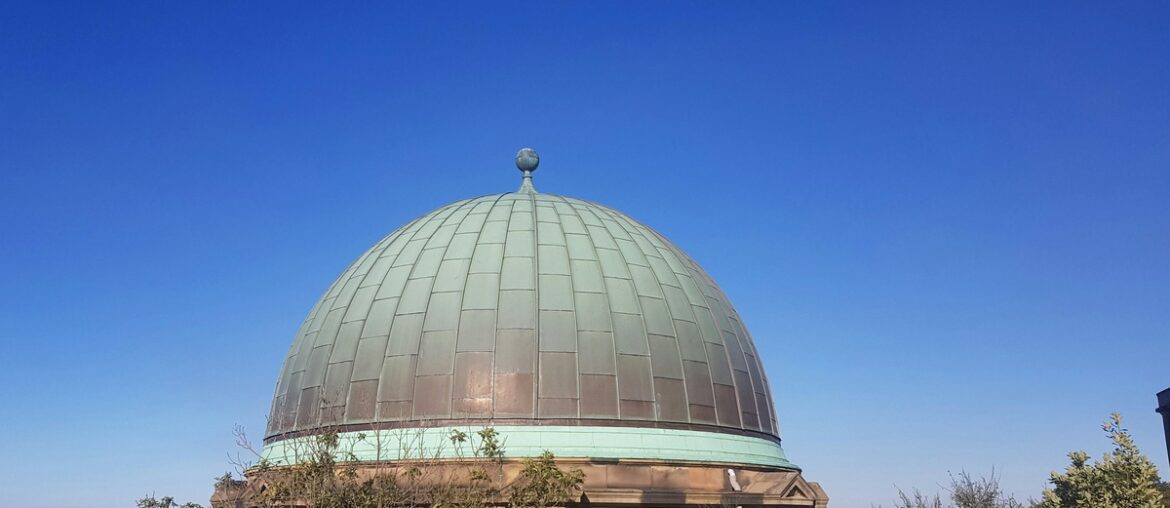West Virginia’s hills and relatively dark skies have long drawn people who enjoy looking up — from amateur stargazers on backcountry drives to students working with campus facilities. Whether you’re planning a short night out or researching institutional sites, a clear, compact list makes it easier to compare locations at a glance.
There are 11 Observatories in West Virginia, ranging from A.B. Brooks Observatory to WVU Observatory. For each site the data are organized as Nearest city (county),Coordinates (lat, lon),Main instrument (aperture m); you’ll find below.
Which observatories on this list welcome the public?
Several facilities offer public observing nights or community events, often advertised on their institution or club pages; others are research-focused and permit visits by appointment only. Check the specific listing below for location details and contact info before you go.
How should I use the coordinates and instrument data when planning a visit?
Use the coordinates for navigation and to verify sky conditions for the site’s elevation and horizon; the main instrument (aperture m) tells you what kinds of objects the scope is best for (larger apertures show fainter detail). Combine that with local weather and event schedules from the listing below to pick the best time.
Observatories in West Virginia
| Name | Nearest city (county) | Coordinates (lat, lon) | Main instrument (aperture m) |
|---|---|---|---|
| Green Bank Observatory | Green Bank (Pocahontas) | 38.4329, -79.8399 | 100.00 |
| Breezy Point Observatory | Cedar Grove (Kanawha) | 38.2325, -81.4214 | 0.41 |
| Marshall University Observatory | Huntington (Cabell) | 38.4208, -82.4223 | 0.41 |
| Spehar Observatory | Wheeling (Ohio) | 40.0650, -80.6780 | 0.41 |
| A.B. Brooks Observatory | West Liberty (Ohio) | 40.1656, -80.5975 | 0.36 |
| WVU Observatory | Morgantown (Monongalia) | 39.6338, -79.9546 | 0.36 |
| Gannett Observatory | Fairmont (Marion) | 39.4839, -80.1648 | 0.36 |
| Shepherd University Observatory | Shepherdstown (Jefferson) | 39.4347, -77.8058 | 0.36 |
| Jesse M. Scott Memorial Observatory | Weston (Lewis) | 39.0980, -80.4480 | 0.36 |
| Concord University Observatory | Athens (Mercer) | 37.4226, -81.0189 | 0.30 |
| Twinstar Observatory | Philippi (Barbour) | 39.1230, -79.9725 | 0.25 |
Images and Descriptions
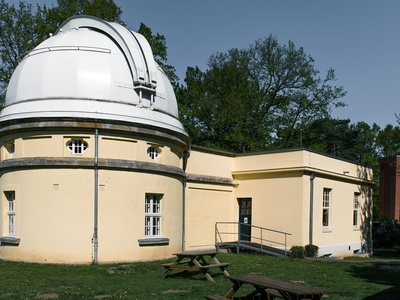
Green Bank Observatory
Home to the world’s largest fully steerable radio telescope, the Robert C. Byrd Green Bank Telescope. Located in the National Radio Quiet Zone, this world-class research facility offers extensive public tours, exhibits, and educational programs, making it a premier science destination.
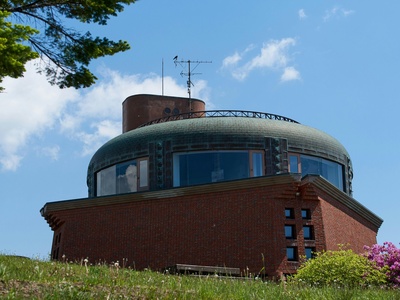
Breezy Point Observatory
Operated by the Kanawha Valley Astronomical Society, this observatory is a hub for amateur astronomers. It features a 16-inch telescope under a classic dome and hosts regular public star parties, offering fantastic views of the night sky for all ages.
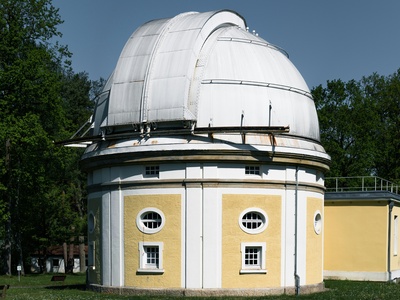
Marshall University Observatory
Situated atop the Science Building on Marshall University’s campus, this facility provides hands-on learning for students. Equipped with a 16-inch telescope, it hosts public viewing nights, giving the Huntington community a chance to explore the cosmos through a powerful instrument.
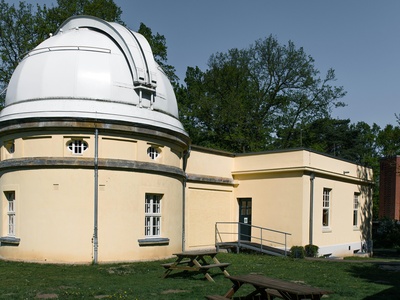
Spehar Observatory
Located on the campus of Wheeling University, the Spehar Observatory has long served as an educational tool. Its 16-inch telescope provides powerful views of the cosmos, though public access may vary, so it is best to check the university’s schedule for events.
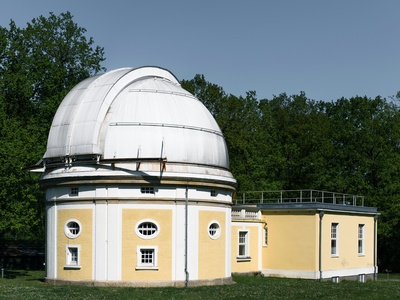
A.B. Brooks Observatory
Located at West Liberty University, this observatory supports astronomy education for students and the community. Housing a 14-inch telescope, it offers public viewing sessions during the academic year, making celestial wonders accessible to the northern panhandle.
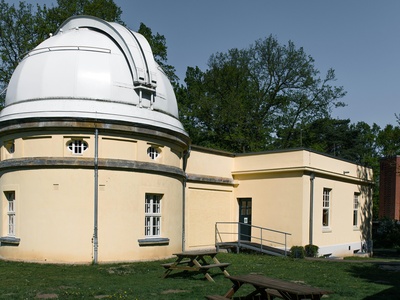
WVU Observatory
Perched on the roof of White Hall at West Virginia University, this observatory is a key resource for the astronomy program. It features a 14-inch telescope and regularly opens its doors to the public for free star parties following planetarium shows.
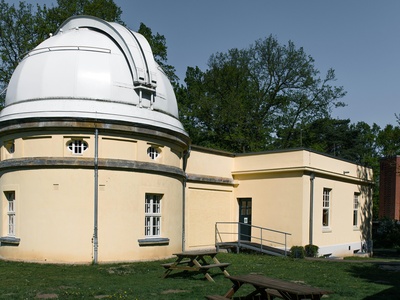
Gannett Observatory
Part of Fairmont State University’s science facilities, the Gannett Observatory provides students and the public with access to the stars. Its 14-inch telescope offers clear views of planets and nebulae during scheduled public events, fostering astronomical curiosity in the region.
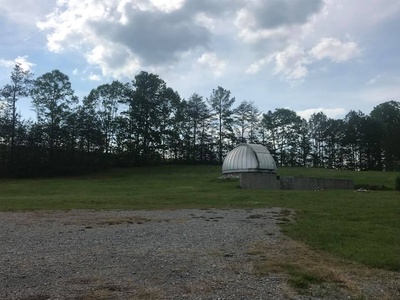
Shepherd University Observatory
Housed in the Byrd Science Center, this modern observatory supports Shepherd University’s curriculum. It features a 14-inch telescope and hosts public observing nights, connecting the eastern panhandle community with fascinating astronomical phenomena and research.
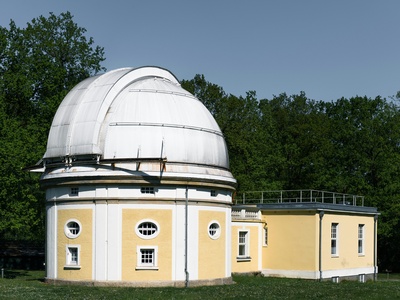
Jesse M. Scott Memorial Observatory
Operated by the Central Appalachian Astronomy Club at the WVU Jackson’s Mill Airfield. This facility provides a dark-sky location for club members and the public during star parties, honoring the memory of a dedicated local amateur astronomer with its 14-inch telescope.
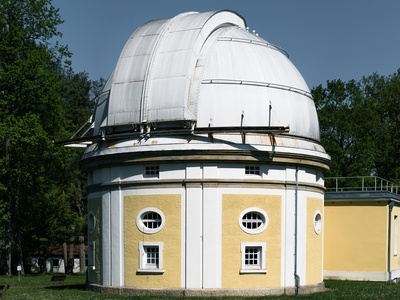
Concord University Observatory
Situated on the Science Building at Concord University, this observatory is an asset for physics students and the southern WV community. Its 12-inch telescope is used for both educational labs and public viewing events, bringing the wonders of space closer to home.
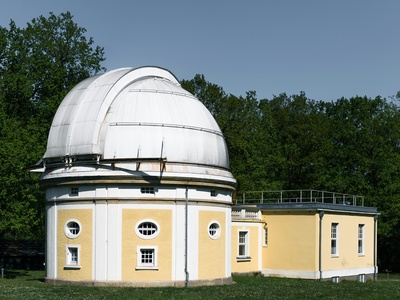
Twinstar Observatory
A unique feature of a local bed and breakfast, this private observatory offers guests a personal tour of the universe. Located under dark rural skies, its 10-inch telescope provides intimate and impressive views of celestial objects for an unforgettable stargazing experience.
Enjoyed this article?
Get daily 10-minute PDFs about astronomy to read before bed!
Sign up for our upcoming micro-learning service where you will learn something new about space and beyond every day while winding down.

